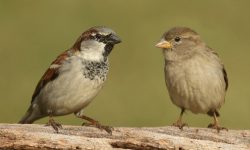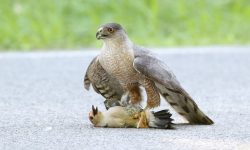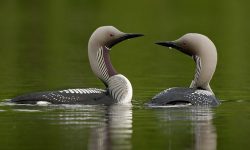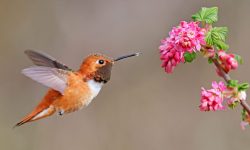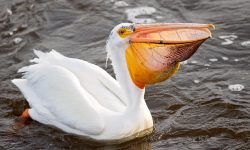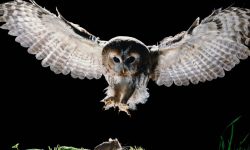Woodpeckers are fascinating birds best known for their rhythmic drumming and ability to excavate wood with incredible precision. But what fuels these energetic forest dwellers? Their diet is far more diverse and specialized than many people realize. In this article, we explore what woodpeckers like to eat most, how their diet changes by season, and how their feeding habits benefit forest ecosystems.
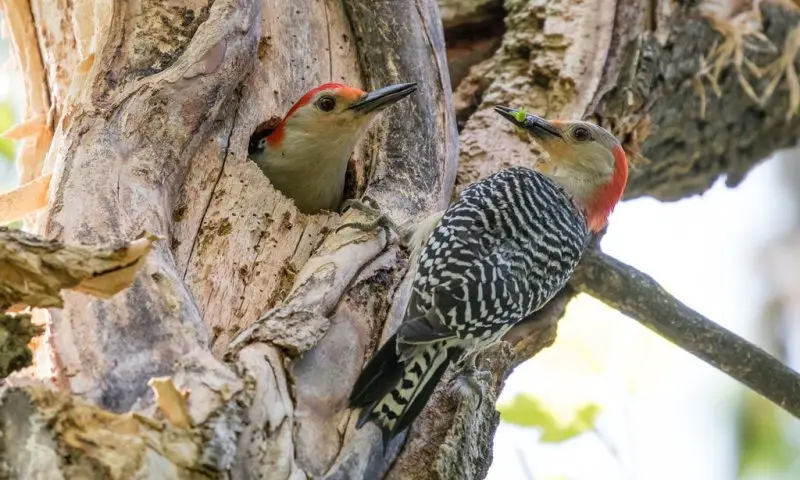
Primary Food Source: Insects and Larvae
Wood-Boring Insects: Hidden Prey Beneath the Bark
For most woodpecker species, insects—particularly those that dwell within wood—constitute the foundational element of their diet. These birds have evolved into specialized foragers equipped with anatomical adaptations that enable them to extract prey embedded deep within tree trunks and branches.
Using their chisel-like beaks, woodpeckers are capable of delivering powerful, precise blows to bark and decaying wood. This behavior allows them to expose insect tunnels and galleries that would be inaccessible to most other predators. Their long, barbed tongues, often coated in sticky saliva, can be extended far beyond the tip of the bill to probe deep into these crevices and extract their hidden prey.
The most commonly targeted wood-boring insects include:
-
Beetle larvae, such as those from bark beetles (Curculionidae) and longhorn beetles (Cerambycidae), which burrow extensively through sapwood and heartwood
-
Carpenter ants (Camponotus spp.), which build elaborate nesting chambers within rotting trees and stumps
-
Termites, both workers and soldiers, which live in cellulose-rich tunnels and may infest standing deadwood
-
Horntail wasp larvae and other wood-boring Hymenoptera, which develop within fallen logs and timber
-
Occasionally, moth or fly larvae associated with decaying wood or fungal growth
By consuming these xylophagous (wood-feeding) insects, woodpeckers play a vital ecological role as biological control agents, suppressing pest outbreaks and limiting the spread of tree diseases. Their foraging activity not only reduces insect load but also aerates decaying wood, promoting fungal colonization and decomposition—essential processes in forest nutrient cycling.
Surface-Dwelling Insects and Opportunistic Arthropods
In addition to boring insects, woodpeckers also exploit more accessible invertebrates that inhabit the outer layers of bark, leaf litter, or foliage. These include:
-
Caterpillars, particularly those of moths and butterflies that feed on tree leaves
-
Spiders, which are plucked from bark crevices or suspended webs
-
Crickets and grasshoppers, often found in forest undergrowth or clearings
-
Centipedes and millipedes, which shelter under logs and bark
-
Adult beetles, especially sap beetles, ground beetles, and click beetles
To capture these surface-dwelling invertebrates, woodpeckers employ a suite of behaviors: bark scaling, where they peel away layers of bark with their beak; moss probing, using the tongue to investigate damp clumps for larvae; and leaf gleaning, a technique involving the direct removal of insects from foliage. Some species even forage along the ground or in low shrubs, adapting their strategy based on prey availability and habitat type.
This broad arthropod-based diet is rich in protein, fats, and essential micronutrients, supporting high metabolic demands during breeding, molting, and chick-rearing seasons.
Sap: A Sweet Energy Source
Sapsuckers and the Art of Tree Tapping
While most woodpeckers focus on insects, certain species—most notably the Yellow-bellied Sapsucker (Sphyrapicus varius)—have evolved a distinctive foraging method: extracting tree sap as a primary food source. This behavior sets them apart both ecologically and physiologically from their insect-hunting relatives.
Sapsuckers feed by drilling neat, horizontal rows of small holes, known as sap wells, into the bark of living trees. These wells penetrate just deep enough to tap into the phloem or xylem, the vascular tissues that transport nutrients throughout the tree. Once sap begins to ooze, the bird returns repeatedly throughout the day to lap it up using its brush-tipped tongue—an adaptation that allows it to absorb liquid efficiently.
Preferred tree species vary by region but often include birch, maple, hickory, and pine, chosen for their sap richness and ease of drilling. Sapsuckers maintain and defend these wells vigorously, as the flow can remain active for days or even weeks.
Nutritional Role of Sap in the Woodpecker Diet
Tree sap is a carbohydrate-rich fluid composed primarily of sucrose, glucose, and fructose, along with trace minerals and amino acids. For woodpeckers, sap offers:
-
A quick, metabolically efficient energy source, particularly valuable in early spring when insect activity is minimal
-
Hydration, especially during dry spells when other water sources may be limited
-
Supplemental sugars that help fuel long-distance migration and cavity excavation
In the case of Yellow-bellied Sapsuckers, sap may comprise up to 20–40% of their seasonal diet, peaking during sap flow periods in spring and fall.
Sap Wells as Biodiversity Hotspots
The ecological impact of sapsuckers extends well beyond their own nutritional needs. Their sap wells become microhabitats that support a range of secondary consumers, including:
-
Ruby-throated Hummingbirds, which time their spring migration to coincide with sapsucker feeding ranges, using sap as a substitute for flower nectar
-
Bats, which visit sap wells at dusk and night, especially in early spring
-
Butterflies and moths, which land to sip sap directly from the bark
-
Small mammals, such as squirrels and martens, which may gnaw at sap wells when energy reserves are low
This ripple effect makes sap-feeding woodpeckers ecosystem engineers, creating food resources that benefit a wide array of forest inhabitants. The seemingly simple act of tree tapping thus plays a crucial role in supporting trophic interactions and seasonal survival strategies across multiple taxa.
Fruits and Berries: A Seasonal Favorite
Late-Season Dietary Shifts
As summer wanes and insect abundance declines, many woodpecker species undergo a notable shift in diet, turning increasingly to fruits and soft mast as a primary energy source. This transition, typically occurring in late summer through autumn, reflects both a response to seasonal availability and a physiological preparation for the demands of winter.
While woodpeckers remain opportunistic feeders, fruits and berries provide an abundant and accessible carbohydrate source during this time of year. These sugar-rich foods supply immediate metabolic fuel, as well as moisture content to aid in hydration as water sources begin to freeze or dry up.
Regional and Species-Based Preferences
The specific fruits consumed vary depending on habitat, latitude, and woodpecker species, but commonly include:
-
Dogwood berries (Cornus spp.), which ripen in late summer and are rich in fat and sugar
-
Wild grapes (Vitis spp.), offering high moisture and energy content in forested or riparian zones
-
Elderberries (Sambucus spp.), particularly favored by Red-bellied and Red-headed Woodpeckers
-
Blackberries (Rubus spp.) and other bramble fruits, eaten fresh or dried on the cane
-
Apples and persimmons, especially by species that frequent orchard edges or rural woodlots
-
Holly (Ilex spp.) and sumac (Rhus spp.) berries, available well into winter and consumed when other fruits are depleted
Some species, like the Northern Flicker or Red-bellied Woodpecker, show considerable frugivory, even caching or returning repeatedly to heavily fruited trees. In urban and suburban settings, woodpeckers may supplement their diet with bird-feeder fruits such as sliced oranges, raisins, or dried cranberries.
Ecological Role as Seed Dispersers
Beyond nutrition, the consumption of fruit also positions woodpeckers as accidental seed dispersers. Seeds that pass through the digestive tract unharmed are deposited across the landscape, often in ideal germination sites such as open forest gaps or along fence lines. This contributes to:
-
Forest regeneration, by spreading early-successional plant species
-
Plant genetic diversity, through long-distance dispersal
-
Habitat complexity, fostering biodiversity across multiple trophic levels
Their movement through varied habitats makes woodpeckers important agents in the dynamics of fruiting plant communities, especially in fragmented or recovering ecosystems.
In summary, fruits and berries not only provide woodpeckers with a vital energy reserve during the lean months but also embed them more deeply into the ecological fabric of their habitats—linking avian life cycles to seasonal fruiting rhythms in the forest.
Nuts and Acorns: High-Energy Storage
Acorn Woodpeckers: Master Architects of the Granary
One of the most remarkable examples of nut-based foraging among birds is exhibited by the Acorn Woodpecker (Melanerpes formicivorus), a species native to oak-dominated woodlands of western North and Central America. Unlike most woodpeckers that forage daily for live prey, Acorn Woodpeckers have evolved a granary-based food storage system that revolves almost entirely around one resource: acorns.
During the late summer and autumn months, these woodpeckers actively harvest green acorns from nearby oaks and painstakingly store them in individually drilled holes across the surface of granary trees—often dead snags, utility poles, fence posts, or even wooden siding. A single granary can contain thousands of acorns, each fitted snugly into its own hole to prevent spoilage or theft.
This extraordinary caching behavior is not merely individual. Acorn Woodpeckers live in cooperative breeding groups, where multiple adults, often related, share the duties of acorn collection, granary defense, and raising young. Their food storage strategy forms the core of their social system, influencing group size, territory defense, and reproductive success.
The stored acorns provide:
-
A stable energy supply during winter when insect prey is scarce or absent
-
High-fat, high-carbohydrate nutrition, critical for thermoregulation in colder climates
-
Social cohesion, as access to the granary supports group living and shared breeding
Other Woodpeckers That Consume Nuts
While the Acorn Woodpecker is uniquely tied to its namesake nut, several other woodpecker species opportunistically consume nuts and seeds, particularly in fall and winter. These include:
-
Beechnuts from American beech trees, favored by species like the Red-headed Woodpecker
-
Hickory nuts, which are sometimes cracked open at feeding sites
-
Pine seeds, especially in boreal forests or mixed conifer stands, where species such as the Hairy Woodpecker forage around cones and bark
-
Hazelnuts and walnuts, occasionally eaten if cracked open by other animals or weathered
Unlike Acorn Woodpeckers, most woodpeckers do not engage in long-term food storage. However, some individuals have been observed wedging nuts into bark crevices or returning to favored nut-producing trees over consecutive seasons.
These plant-based foods provide dense caloric reserves that supplement insectivorous diets, especially in regions where winter limits arthropod activity. As a result, nut consumption may influence overwintering success, territorial behavior, and population persistence in temperate climates.
Other Food Sources: Opportunistic Foraging
Carnivorous Tendencies: Rare but Real
Though primarily insectivorous and frugivorous, woodpeckers occasionally display carnivorous behavior, exploiting animal protein sources when conditions demand it. These opportunistic foraging events are infrequent but ecologically noteworthy, especially in food-scarce environments or during periods of high energy demand.
Among the more unusual dietary observations:
-
Egg predation and nestling consumption: Some species, including the Red-bellied Woodpecker (Melanerpes carolinus) and Great Spotted Woodpecker (Dendrocopos major), have been documented raiding the nests of smaller songbirds. They may pierce eggs or seize unguarded chicks, particularly during the breeding season when protein needs are elevated.
-
Carrion scavenging: In colder regions or winter months, woodpeckers have been observed feeding on dead animals, including mammals and birds. While rare, this behavior underscores their dietary flexibility and survival instincts under harsh conditions.
These behaviors are not typical of most woodpecker species and do not define their core diet, but they highlight the adaptive capacity of these birds to exploit unusual resources when opportunity or necessity arises.
Human-Provided Foods: Supplemental Urban Nutrition
In suburban and backyard settings, many woodpeckers have adapted to take advantage of artificial food sources, especially during periods when natural prey is scarce. These supplemental foods include:
-
Suet: Rendered animal fat is the most popular offering among backyard birders. Suet is rich in lipids and calories, making it especially beneficial in winter when woodpeckers face thermoregulatory stress and decreased insect availability. Suet cakes may be mixed with seeds, fruits, or mealworms for added appeal.
-
Peanut butter blends: High in both fat and protein, peanut butter mixtures attract a variety of woodpecker species. They are often smeared into bark crevices or offered in specialized feeders.
-
Sunflower seeds and shelled peanuts: These high-energy seeds are commonly consumed by Downy, Red-bellied, and Hairy Woodpeckers, particularly at platform or hopper feeders.
-
Fruit offerings: Oranges, apple slices, and dried raisins may also be accepted, particularly during the fall and winter.
These human-provided foods can supplement natural diets, especially in fragmented habitats or urban environments where insect populations are reduced. While beneficial for birdwatching and conservation outreach, experts recommend offering clean, fresh, and species-appropriate foods to avoid dependency or health issues in wild populations.
Feeding Adaptations of Woodpeckers
Anatomical Marvels Designed for Foraging
Woodpeckers are among the most structurally specialized birds in the avian world, engineered by evolution to thrive in vertical landscapes and excavate their food from beneath bark and deep within wood. Their feeding apparatus is a masterclass in functional biology, combining strength, precision, and resilience to exploit resources unavailable to most other birds.
1. Chisel-Like Bills for Excavation
At the forefront of their anatomical arsenal is the chisel-shaped bill, composed of dense keratin and reinforced bone. Unlike the curved beaks of songbirds or raptors, the woodpecker’s bill functions like a hammer and wedge, delivering rapid, forceful blows that fracture bark and splinter wood. The tip self-sharpens through uneven wear, ensuring consistent cutting efficiency.
2. Shock-Absorbing Skulls
To withstand the impact of repeated pecking—often at rates exceeding 20 pecks per second—woodpeckers possess shock-absorbing cranial adaptations. These include:
-
A thick, spongy skull bone structure that disperses impact forces
-
A small subdural space to prevent the brain from rattling
-
A reinforced hyoid apparatus (a bone and muscle complex that also anchors the tongue), which wraps around the skull like a safety harness
These adaptations protect the brain from concussive damage, allowing woodpeckers to drill with high intensity without injury.
3. Extensible, Barbed Tongues
Perhaps the most extraordinary tool in a woodpecker’s toolkit is its long, prehensile tongue, which can extend up to two to three times the length of the beak. The tongue is tipped with barbs or brushy projections and coated in sticky mucus, ideal for latching onto insect larvae, ants, or beetle grubs hidden deep in wood tunnels. It’s launched and retracted with precision by a muscular, spring-like hyoid apparatus.
4. Zygodactyl Feet for Climbing Grip
Woodpeckers feature a zygodactyl foot arrangement, with two toes pointing forward and two pointing backward. This toe configuration provides an exceptionally strong grip on vertical tree trunks and branches, allowing the bird to anchor itself securely while delivering high-impact pecks. Specialized foot pad musculature helps them balance even on narrow surfaces.
5. Stiff Tail Feathers for Stability
Complementing the climbing grip is a set of rigid, pointed tail feathers that act like a tripod support. When pressed against the trunk, these feathers help stabilize the bird during vertical ascents and pecking bouts. The tail vertebrae are reinforced to handle repeated bracing, and the feather shafts are more robust than in most other birds.
Adaptation Equals Dietary Flexibility
These specialized traits collectively allow woodpeckers to:
-
Extract concealed insect prey
-
Harvest sap and fruit
-
Open nuts and seeds
-
Defend and excavate nesting cavities
This combination of precision excavation tools, shock mitigation, and arboreal agility has made woodpeckers among the most versatile foragers in woodland ecosystems. Their adaptations not only serve feeding but also shape forest dynamics through insect population control and tree cavity creation for secondary nesters.
Seasonal Variation in Diet
Spring and Summer: Insect Abundance and Nesting Demands
With the return of warmer temperatures, spring triggers a biological surge in insect populations, and woodpeckers respond by shifting their diet sharply toward protein-rich arthropods. This seasonal abundance aligns perfectly with the woodpecker’s breeding cycle, making insects the primary fuel source for:
-
Egg production and incubation, requiring high-energy and nutrient-dense diets
-
Nestling growth, as chicks demand near-constant feedings of soft-bodied, easily digestible insects
-
Post-fledging care, during which juveniles learn to forage under parental supervision
Woodpeckers consume a broad array of prey, including beetle larvae, caterpillars, ants, termites, and spiders, often extracted from beneath bark, deep inside trunks, or among forest litter. The high protein and fat content of these insects supports rapid chick development and feather formation.
This insectivorous focus peaks in early to mid-summer, when the metabolic demands of reproduction and growth are highest.
Fall and Winter: Fueling Survival with Fruits, Nuts, and Fat
As autumn arrives and insect availability declines, woodpeckers undergo a strategic dietary transition. They begin relying on energy-dense plant-based foods to maintain body heat and energy reserves through colder, harsher months.
Key components of their winter diet include:
-
Fat- and carbohydrate-rich nuts, such as acorns, beechnuts, and hickory nuts
-
Late-season berries and fruits, like holly, sumac, dogwood berries, and wild grapes
-
Animal fat sources, particularly suet offered at feeders during freezing temperatures
-
Stored food caches, as seen in species like the Acorn Woodpecker, which taps into granary trees stocked months earlier
This dietary plasticity allows woodpeckers to remain non-migratory, even in temperate or boreal habitats, where other insectivorous birds must relocate to survive the winter. Their ability to switch from active hunting to passive foraging or food storage showcases one of the most important adaptive strategies in their ecological success.
Conclusion
So, what do woodpeckers like to eat most? Their primary preference is for insects and larvae, especially those hidden beneath bark. However, their diet is impressively flexible—encompassing tree sap, fruits, nuts, and even human-provided food like suet.
This diverse palate helps woodpeckers thrive in a variety of habitats and seasons, from dense forests to suburban backyards. Their role as insect predators and seed dispersers also highlights their ecological importance. Whether they’re hammering into a decaying tree or visiting a backyard feeder, woodpeckers are always on the lookout for their next nutrient-packed meal.

